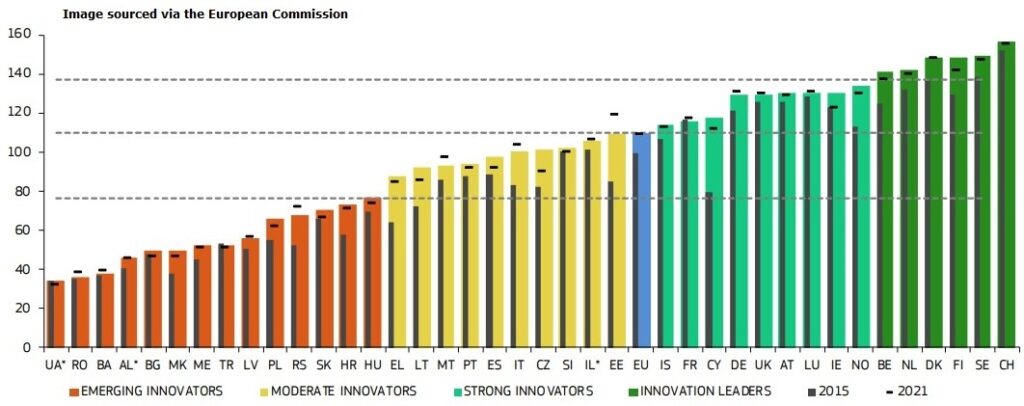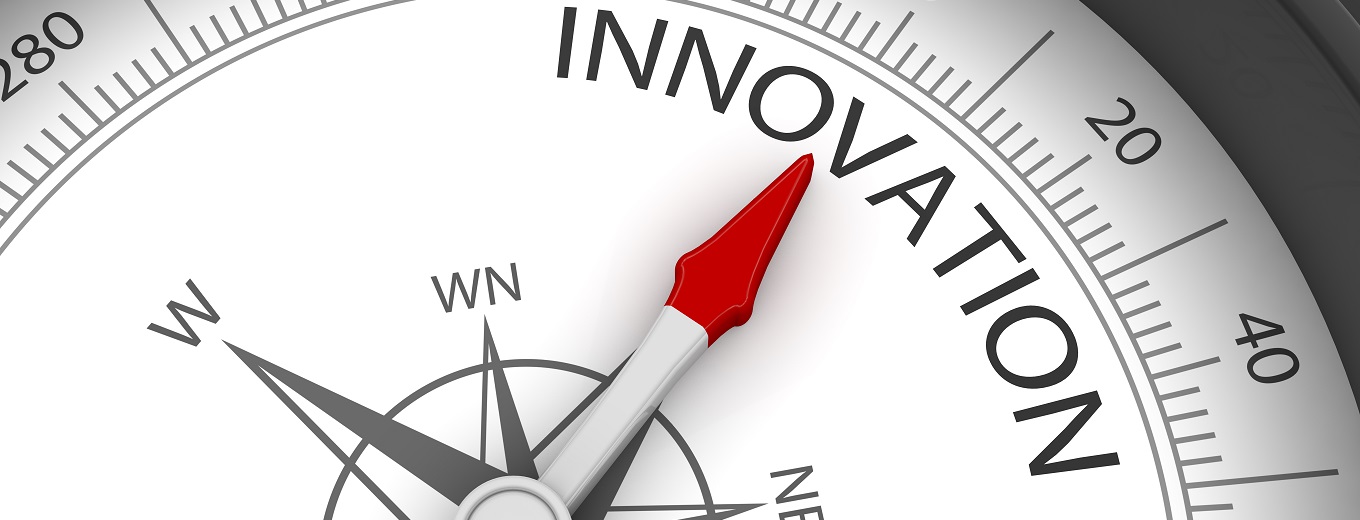The European innovation scoreboard 2022 shows that compared to 2021, the EU and Switzerland continue to improve while the global innovation level decreases.
The European Commission’s Directorate-General for Research and Innovation (DG RTD) publicised the European innovation scoreboard 2022 report (EIS 2022), the executive summary and the different country profiles. The EIS measures the innovation performance of the EU Member States and other countries and compares them to the last year and 2015. While Switzerland remains Europe’s Innovation Leader, the general performance of the EU has increased by 9.9 percentage points since 2015. Furthermore, this year the EU scores for the first time higher than Japan. However, the gap between innovation leaders and emerging innovators in EU countries increases and needs to be addressed. The graph below shows the performance of the different European countries.

After the revision of the measurement framework in 2021, no fundamental changes have been made to the methodology in the EIS 2022 report. The data are based on four main types of activities – Framework conditions, Investments, Innovation activities, and Impacts – with 12 dimensions, capturing in total 32 indicators. Based on their average performance (relative to the EU), Member States fall into four performance groups (emerging, moderate, strong and leading innovators). Compared to the results in the EIS 2021 report (see SwissCore article), three countries have changed performance groups. The Netherlands has become an Innovation Leader, Cyprus a Strong Innovator, and Estonia, a Moderate Innovator. Between 2021 and 2022, 19 Member States increased their performance. The strongest development was in Czechia, Ireland, and Finland (at 7.5 percentage points or more). During the same time, the performance of eight Member States, including Estonia, France, Germany, Italy, Latvia, Luxembourg, Malta, and Romania, declined.
While most of the strong and leading innovators are in Northern and Western Europe, most of the Moderate and Emerging Innovators are in Southern and Eastern Europe. Even though, since 2015, innovation performance has increased in 26 EU Member States, which led to an average increase of 9.9%, the gap could not be closed. To address this challenge, the European Commission (EC) presented in July 2022 the New European Innovation Agenda (see SwissCore article). It focuses on closing the innovation divide in Europe and aims to build on Europeans’ entrepreneurial mindset, scientific excellence, the strength of the Single Market and democratic values.
At the global level, between 2021 and 2022, only Switzerland, the EU, Chile, with Mexico for the first time included in the EIS, and South Africa have improved their innovation performance. Consequently, the EU has overtaken Japan and closed part of its performance gap to some of its other competitors as South Korea or the US. The relatively weak global performance can partly be explained by the COVID-19 pandemic that had a decreasing effect on factors such as innovation expenditures, sales of innovative products, and venture capital expenditures. Switzerland remains the overall best-performing country in Europe. Switzerland has the highest performance in six indicators: New doctorate graduates, International scientific co-publications, Foreign doctorate students, Public-private co-publications, Medium- and high-tech product exports, and Resource productivity. Since 2015 the strongest increases were in Venture capital expenditures and Medium and high-tech goods exports. During the same period, the strongest decreases were in Sales of innovative products, Product innovators and Environment-related technologies. Overall, Switzerland performs 4.0 percentage points stronger than in 2015, which is lower than the EU average of 9.9%, and 1.7 percentage points stronger than in 2021, which is higher than the EU average of 0.6%.

